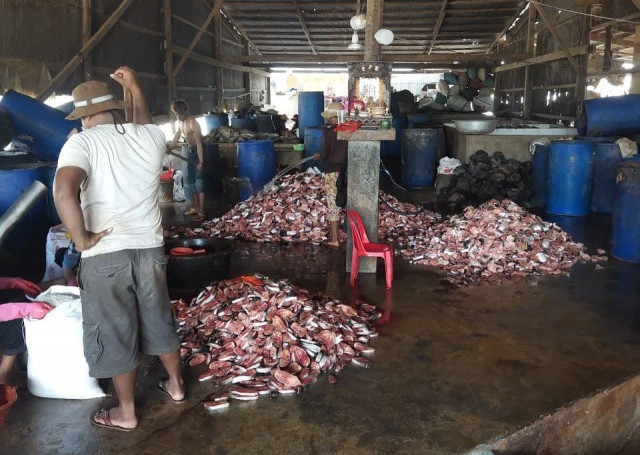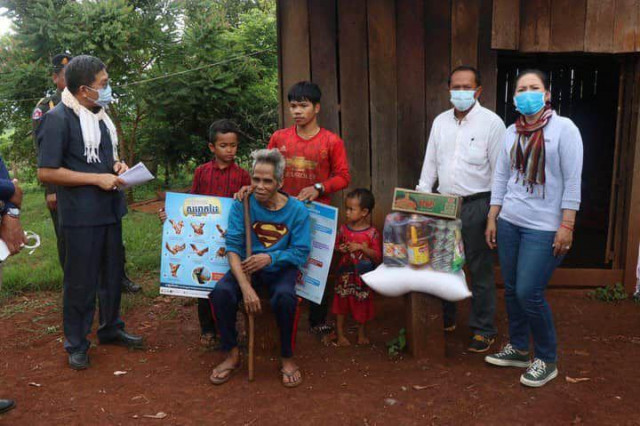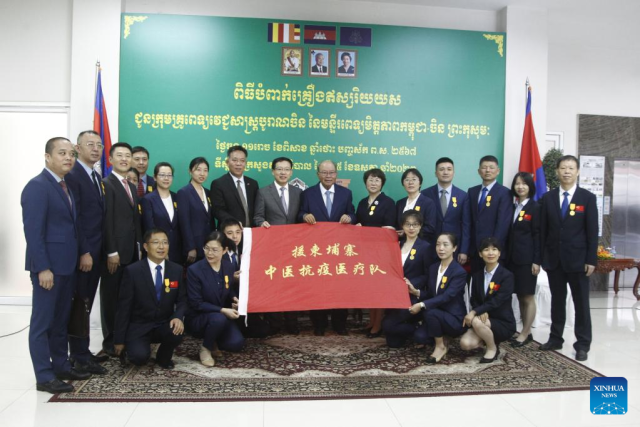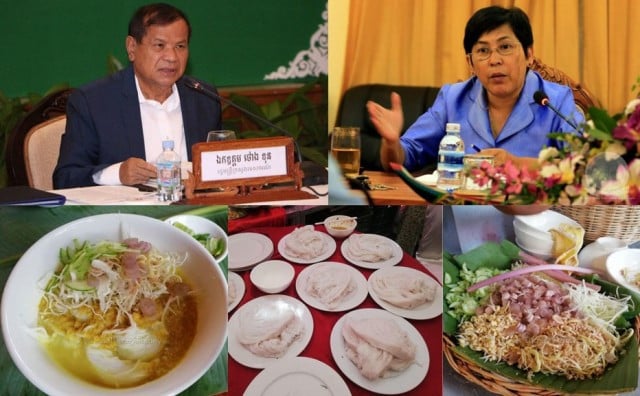Cambodian Fish Farming to “Collapse” without Restrictions in Fish Imports

- By Ou Sokmean
- and Teng Yalirozy
- November 10, 2021 1:53 PM
Fisheries associations in Cambodia voiced long-standing complaints over cheap fish imported from Thailand and Vietnam, warning the whole sector could collapse without intervention
PHNOM PENH--Cambodian fish farmers have again complained to the government over imported fish, claiming they are losing market shares to cheap imports of frozen fish from Thailand.
The Cambodian Aquaculture Association, as well as the Cambodian Safe Fish, Meat and Vegetable Association (CSFMVA), have demanded the government restrict fish imports from neighboring countries and address issues faced by domestic fish farmers.
According to Sok Yong, vice president of CSFMVA, imports of frozen fish—especially pangasius from Thailand—have significantly increased in the last month, but neither Yong, the Ministry of Agriculture nor the Ministry of Commerce could provide any data to support it.
Still, Yong maintained that he has observed the impact of increased imports among his association and other fish farmers.
“Markets in Siem Reap and some provinces bordering Thailand are being overflowed by frozen fish imported from Thailand, such as catfish, silver barb, especially pangasius fish,” he said.
He said the imported pangasius fish is mostly bought into Cambodia by traders, who sell the fish on to be processed into fish paste and dried fish.
“Nowadays, the imports of frozen fish from Thailand to our market is rising,” Yong said. “It is because the pangasius fish that most Thai community can raise are not distributed or sold for the Thais to eat. Most of those fish are imported through Poipet and Lem borders. Pangasius fish in Thailand are raised to be used for animal feed only.”
He warned that the imported fish could be dangerous to consume, claiming that they are not raised properly or hygienically, although he did not provide specific details.
By Yong’s calculations, at least 15 tons of frozen pangasius are imported from Thailand to Siem Reap Province each day, but Thai imports have also been found in provincial markets across Kampong Cham, Kampong Thom and Phnom Penh.
The issue, he said, is that cheaper imports are undercutting the domestically produced fish market.
“Right now, although our farmers' pangasius fish costs only 4,500 riel [$1.15] per kilogram, no consumers buy it, because the fish imported from Thailand costs only 3,700 riel [$0.90] or less per kilogram,” he said.
Yong echoed demands made by the Cambodian Aquaculture Association throughout the year, with complaints first being voiced in January 2021 which were met by promises of tougher restrictions on imports by the Ministry of Agriculture who also said they would help reduce the costs of domestic fish farming in February 2021.
However, by June 2021, fish farmers were again complaining that little had changed and that the Ministry of Agriculture’s interventions had been ineffective, with many local fish farmers taking on additional debt to ensure their fish farms survived while markets were largely closed due to COVID-19.
Sok Raden, president of the Cambodian Aquaculture Association, said that many aquaculture farmers have simply given up in response to the ministry’s lackluster efforts to support local business and to help them compete against Thai and Vietnamese imports.
“Lately, some farmers are afraid to start or continue the fish farming business because the fish they raise is not only sold cheaply but also often unsold entirely,” he said.
Raden said a large number of family-run fish farms have now given up the business because they could not afford to continue, while large and medium-sized fish farmers have also reduced their production domestically.
This comes at a time where a combination of climate change impacts, hydropower projects both in and beyond Cambodia, along with extreme weather events and less predictable seasons, have all contributed to declining wild fish catches. Cambodia’s fish farms were seen as a potential solution to declining catches from rivers, but the cost of doing business for domestic fish farmers—compounded by the need to import fish food and antibiotics—has left local farmers unable to compete with cheaper imported fish.
“If Cambodia does not strengthen or restrict fish imports from neighboring countries, our aquaculture sector will collapse,” Raden stressed.
Kim Hout, director of the Battambang Provincial Department of Commerce, acknowledged that there are indeed imports of fish to Cambodia every day, but could not say how many.
Instead, he said “Imports of fish through the Lem border are not as much as imports through the Poipet border.”
Pang Vanseth, director of the Banteay Meanchey Provincial Department of Commerce, declined to comment on the import of frozen fish from Thailand into the Cambodian market.
“I cannot grasp that information,” he said.
Pum Sotha, director-general of the Fisheries Administration, said since the beginning of 2021, the Fisheries Administration has not issued a permit to import pangasius fish or other species of fish into Cambodia.
“In the case of the import of frozen fish from Thailand, we will cooperate with professional institutions to prevent more imports,” he affirmed.
According to the draft Law on Finance for Management in 2022, the fisheries sub-sector is expected to grow slower next year compared to 2021 due to the expected decline in aquaculture production caused by obstructions, as well as difficulties in accessing the supply market.















